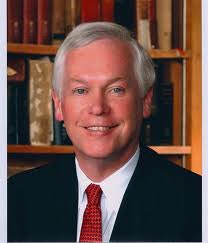
They pick up on popular rhetoric now baked into the American psyche. Americans think that college costs too much. Higher education leadership can argue the difference between cost and sticker price, emphasize the value of the liberal arts education and plead with alumni as new fundraising targets now top $5 billion at some places. The problem is that — in the end — it doesn’t matter much anymore.
It’s hard to make a good argument if no one is listening.
In a post-recessionary world, key aspects of American higher education likely will remain unchanged. Elite colleges will attract more students than they need. They will shepherd resources and adapt just enough to continue what they’ve always done. It will be perhaps decades before their leadership recognizes that their stalwart defense of the status quo has made them irrelevant except as country club training grounds for the talented and sometimes wealthy. Their poorer brethren will scramble to find students, locate resources and emulate what richer schools accomplish. Wherever they are in the pecking order, however, most colleges will largely fail in their efforts.
American families will vote with their feet or through their pocketbook. Nearly 50 percent of the students are already in two-year institutions, increasingly by choice rather than because of cash flow. For-profits, fueled by consumer demand and supported historically through federal grants, have also taken a bite out of the potential student admission pool. And then there are MOOCs, whose proponents promise an egalitarian framework, ease-of-use and a brand-name certification.
It’s impossible to determine precisely how all of these changes will play out. What we can say with considerable confidence is that there will be winners and losers. American higher education now has a problem from which its proponents can hide but no longer run.
If quality — built on resourcefulness and adaptability — characterizes the history of American higher education, then the most critical intersection in the future will be the point at which people, programs and facilities come together.
Let’s look at each component.
In shared governance, trustees, senior administration and faculty work together in the best settings to guide institutional direction. At most colleges, faculty have always had primary responsibility for developing the academic program. How they exercise control varies dramatically across institutions. It is likely that the best innovation will occur there.
Programs must be made more relevant. Colleges and universities have a responsibility to provide the “surround” — internships, externships and strong college placement offices. They must create order in an end game that simultaneously encourages direction and experimentation by students within and outside the classroom to prepare them as graduates for the workforce and as citizens. Faculty must quickly embrace the term “output.” And colleges and universities must develop better mechanisms to measure it.
Those institutions that succeed best, whatever the size of their endowment, will look at how to support nimble and creative faculty. Ultimately, the most critical question must be: “What is the nature of our educational enterprise?” To develop quality, it is always assumed that higher education institutions must isolate rather than collaborate to preserve their unique identity. Further, colleges and universities also believe, to borrow from the children’s adage, that they must own the church, the steeple and all of the people.
It’s time for American higher education to focus on investing in collaboration and disinvestment instead.
The heart of a good student services program, for example, is the social contract between the college and the student. Does an institution ultimately need to drive down its precious bond capacity to provide better consumer-driven residential facilities? When will colleges recognize that the social contract determines outcome, while the residence hall is simply the building into which students are placed?
What other facilities can be shared in common, especially in urban areas, or developed in town/gown campus edge or downtown investments through private and public partnerships that dramatically hold down the need for new and recurring investment in land, capital and labor?
To rebuild the higher education agenda, we must figure out how to bring down administrative costs to support the academic program. Isn’t this why we invented lawyers, accountants and Moody’s? We need new partnership investment strategies to lower capital costs to reinvest in quality programs.
If higher education is to save itself, it must do so by rethinking these questions. Why are we here? How can we empower our faculty to do well and fulfill our mission? And finally, what administrative duties can we stop duplicating to accomplish in combination with others and outsource collectively to answer the first two questions?
These answers may be radical shifts in a collegiate cultural mindset toward collaboration and strategic disinvestment in areas like facilities ownership. But if they support a dynamic academic program, it’s time to call the question.
Dr. Brian C. Mitchell is president of Brian Mitchell Associates and a director of the Edvance Foundation. He is the retired president of Bucknell University and former president of Washington & Jefferson College.















